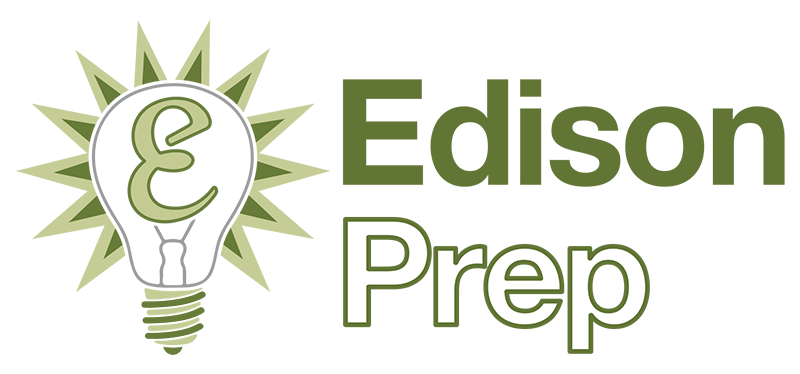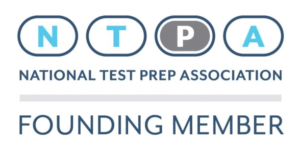Be Careful What You Wish For: The Cautionary Tale of the New SAT for March 2016
The College Board just released its first meaningful problem sets of sample PSAT/SAT questions, which is far more helpful than the specifications document that industry professionals scrutinized this past April. The coming March 2016 SAT overhaul, which has been widely chronicled in the media, has finally begun taking shape. (Links to the sample problem sets are at the bottom of this blog post.) Both of us had anticipated heavy overhauls to virtually all aspects of the test (and to our instructional materials), but we anticipated that the math section would require the least renovation. Ratios would still be ratios, and triangles will still have three sides. We could not have been more wrong. While there are intriguing aspects to all of the new question types that were released, math was the one that threw us (and most of our tutoring colleagues on LinkedIn) the most.
Our commentary on these new SAT developments is broken into the three sections shown below:
1) Optimal timeline for Sophomores (Class of 2017) planning to take the tests
2) First impressions of each test section based on the newly-released SAT questions
3) Closing thoughts
1) Optimal timeline for sophomores planning to take the tests:
The answer for most sophomores is simple: most sophomores should aim to either take the existing SAT and finish by January 2016, or prepare for the ACT via a timeline of their choosing. Any ACT date is fine, since the ACT is not being overhauled this year. An ACT date should primarily be chosen based upon when students have time to study. We have always told students that a responsible test prep plan should aim to have a student finish by June of his or her junior year at the latest. The new SAT will only be offered in March, May, and June of 2016 before that deadline, with the October 2016 test being available as the last shot for most schools’ early action deadlines. Given that a fair portion of students need to take the SAT Subject Tests in May or June alongside their AP exams, this gives current sophomores a very tight window with which to succeed on the new SAT, take it twice in order to “superscore” the best section scores from both tests, and be done.
The new SAT timeline is an especially bad “perfect storm” for Atlanta private school students, with all three new SAT dates having significant roadblocks to success.
March SAT: The March SAT has fallen during one of the two weekends of private school spring break for as long as we have lived in Atlanta.
May SAT: The May SAT takes place 36 hours before AP exams begin. Many students taking APs will rightfully want to spend those valuable last few weeks preparing for AP exams instead of for the new SAT.
June SAT: The June SAT takes place after a fair number of students are away at camp or are involved in summer activities or jobs. Many parents also confide in us that getting their sons/daughters to study for the test after finals, while their friends are wooing them with activities that are more fun than the SAT, is a fruitless endeavor. Additionally, the June test date is usually the day after finals end for the high schools that historically end much later than others (e.g. Weber, Marist).
Scores for the initial March 2016 SAT may not be released until after the May 2016 exam.
Despite shocked outcries from college counselors in the audience at the recent College Board convention in Las Vegas, the College Board has refused to guarantee that students’ SAT results from the inaugural March 2016 SAT will be available before students take their tests in May 2016 (more info here). The fact that College Board refused to guarantee it in the face of such withering criticism does not inspire confidence that March 2016 scores will have the swift three-week turnaround we are all used to. Students who take both the March and May 2016 tests will likely be flying blind for their second test.
Is it okay for sophomores (Class of 2017) to take the SAT this May and/or June?
We have always urged students to focus on getting a great GPA freshman and sophomore year and to put all concerns about the SAT/ACT off until after sophomore year is over. We’ve turned away dozens of clients who wanted to start tutoring during their sophomore year. Most sophomores should still wait until this summer to begin tutoring and studying for the SAT if the SAT is their desired test. However, given the abbreviated runway with just four tests during junior year (October, November, and December 2015, and January 2016), we have amended our normal rules for current sophomores who are asking about potentially taking the May and/or June 2015 SAT tests. This might be a good solution for people who are gone all summer and/or who have extreme time commitments (e.g. APs, sports) in the Fall 2015 semester.
2) First impressions of each test section based on the newly-released SAT questions:
Overall:
The new SAT is intellectually more challenging on all fronts. Frankly, we would be far more impressed with someone who misses zero questions on an SAT test resembling these released practice questions than either the existing SAT or ACT. However, as long as colleges take these tests on an even keel with each other, willingly taking a test that is harder to do well on is not necessarily the best idea. Most students would rather dominate the PAC-10 than flounder in the SEC. One caveat: a sense for typical SAT scoring curves will not be available until June 30, 2015, when 10 fully-calibrated tests are released in the new SAT Blue Book. The new SAT is impressive in the depth of knowledge, synthesis, and fluency that is required from students. While this change ostensibly originates from the College Board’s idealistic desire to create a test that better assesses the skills that students will need to succeed in college, these changes may, in the short term, drive students into the waiting arms of the ACT or the existing SAT. Every year, students flee the very difficult AP Calculus and instead sign up for AP Statistics to fulfill their math requirement. A similar pragmatism will likely be seen in many sophomores who are planning to take the path of least resistance.
Writing:
The new SAT grammar questions will be presented in the context of short vignettes, not independent sentences as they are today. The section strongly mimics the grammar-in-context format of the ACT. Compared to the existing SAT, students will see far more questions on comma splices, punctuation, redundancy, colons, semicolons, selection of topic sentences, and selection of concluding sentences. When we took the May 2014 test, we had grammar questions as part of our “experimental” section. Our first thought was that these questions were so similar to the ACT as to be borderline copyright infringement. Many of our current ACT grammar strategies will be easily adapted to these new-format SAT grammar questions. Grammar is the section that students should worry least about on the new SAT. As with the existing SAT, grammar will remain the most coachable area for most students.

Many students have been anxiously awaiting the elimination of vocabulary from the new SAT. However, reports of vocab’s death have been greatly exaggerated. Here’s a smattering of vocab words from the sample problems on the College Board’s site: hearth, reverberate, evoke, poignancy, gaiety, ambivalent, reciprocate, vivacious, acute, fleeting, foreshadow, stymied, hyperbole, solemn, diminution, subversion, jurisdiction, astute, bridle, tyrannical, maxim, maladministration, agitate, immunity, inimical, appropriations, petty, idealist, advocate, neutrality, convey, clarify, sabotage, prone, siphon, empirically, edible, and conspicuous. These words came from just 24 sample questions from the new SAT, or less than half of a real Reading test. The new SAT will continue to have more higher-level vocab than the reading passages on the ACT, which occasionally have words like “burnish” or “consternation.”
Some of our students who are diligent vocab-studiers but who are slow readers have commented that they love the vocab-based sentence completions on the current SAT because finishing those questions quickly allows them extra time with which to complete the reading passages. This new format will make timing on the SAT reading passages similar to that of the ACT reading passages.
We have been talking with some of our tutoring colleagues across the US about how students who lack exposure to higher-level literature and/or other pre-existing academic information may fare worse on the new-style reading passages. For example, 1/3 of the sample reading questions that were posted deal with the structure of the U.S. government. For those students at not-so-great schools, those who haven’t taken certain history classes yet, or international students whom we tutor who just came to the country recently, this is a meaningful concern. By comparison, few current SAT passages require outside knowledge or understanding of external topics, and they can often be quite casual/non-academic in nature (such as a passage about a girl who has a crush on a fellow college student who plays the cello in SAT Blue Book Test #5). Finally, several of the questions will make students justify their answer. For example, students will answer a question, and then the next question will ask the student to identify the portion of the passage that helped them answer the prior question. These problems could be “landmines” for top-scoring students, since missing the first question will most likely mean missing the second one.
Math:
Few of the most powerful techniques that work well on today’s existing SAT and ACT, such as plugging and chugging numbers and clever process-of-elimination strategies, will work as effectively on these new-style math problems. These new Math problems are far more theoretical and conceptual than the existing SAT’s questions. Students who attempt the existing SAT and fail to finish by January 2016 will experience a rocky transition when beginning to study for the new SAT’s math section, which makes picking one of the two tests and running with it the smarter strategy. Some of the currently effective and efficient strategies may in fact be detrimental based on the sample problems we’ve seen thus far. Students who are linear thinkers will be jarred to find that while only 1 or 2 questions per test currently have information that is not used in the problem, a larger proportion of these new problems include information that is not necessary to solve the problem. On the current SAT, knowing that you’ll generally have to use all of the information in the question is a powerful strategy; if you are stuck, focusing on the one fact that you haven’t used yet is a great way to get unstuck!
Geometry gets whacked:
Geometry makes up 15-18 of the 54 questions on the current SAT, or roughly 1/3 of the test. In the new SAT, geometry is an afterthought, contributing six or fewer of the 58 questions on the new test. Given that geometry is one of the main two subjects students study freshman and sophomore years, this is a big change. The material that constitutes 50% of a student’s math curriculum for 9th and 10th grade will contribute to only 10% of the SAT math questions. And the sliver of geometry that’s included is tough (sample here, no calculator permitted).
Additional algebra questions take geometry’s place:
The College Board calls this expanded 19-question section “the Heart of Algebra.” These new Algebra problems are very impressive in that they are more resistant to plugging in numbers (guessing and checking). These problems require students to visualize equations that relate variables to each other within the context of a word problem rather than allowing students to plug and chug. A great example is this problem, in which students are asked to envision the formula for a hotel rate that includes a flat fee and sales tax. On the existing SAT, this same problem might instead ask “How many nights did Aaron stay if he paid $544.73?”
One change that the national press has tended to ignore in its coverage is that students will no longer be able to use their calculators on approximately 1/3 of the math test. Many parents underestimate how reliant their students are on calculators for the existing SAT. Tutors will have to spend time teaching students speedy ways to do mental math and refreshing students on how to do long division.
Trigonometry has been added to the new SAT:
The current ACT has approximately eight trigonometry-based questions, advanced material that’s not covered on the existing SAT. The new SAT will include serious trigonometry that many students in advanced math classes don’t meaningfully cover until very late in their junior year. Students in some of the middle or lower math tracks might not cover these advanced trigonometry concepts until senior year (if ever). Three sample trig problems are here: Trig Problem #1, Trig Problem #2, and Trig Problem #3. We actually gave Trig Problem #3 to a cherry-picked sample of four of our smartest SAT students who are all scoring in the top 3%. Only 1 of the 4 got #3 correct, which is the same as you’d expect from just random guessing (there are 4 answer choices).
The “Formula Box” that students receive on the test has expanded:

The new SAT math topics include items not often tested on the current SAT, such as standard deviation, margin of error, statistical study design, and imaginary numbers (this list of additional topics will grow when we have 10 full tests to analyze in July 2015). Most importantly, data interpretation questions are the single biggest growth area. These questions are very reminiscent of the ACT Science section. Data interpretation on the new SAT is 17 questions versus only 6 questions on the current SAT.One oddball statistical study design word problem from the new SAT sample questions is shown here:

– Another statistical study design question is here.
– A lengthy word problem is here.
– An imaginary number problem is here.
– An advanced data interpretation problem is here.
– A healthy paranoia will take place as students are painstakingly measuring and counting precise data points on problems like this one, this one , and this one.
The newly “optional” SAT essay will be no more optional than the current “optional” ACT essay. At UGA, Harvard, and 1500+ other schools in the nation, your ACT score is not valid without the Writing component (essay). This will continue to be the case at most schools and your student must take the essay component if they take the new SAT. A few proactive schools like Georgia Tech have already posted about it; other schools will more publicly announce their policies later this year.The new SAT essay is moving to an ACT-style grading format, by which we mean that the essay score will be reported as a separate score that is not built into the Writing score, as it is today. The two important changes for the new essay are 1) the length has been doubled to 50 minutes and 2) students may no longer make up facts as they can on the current SAT essay. Components of the essay will be similar to an AP History DBQ essay; students will be given “source documents” that they must respond to when creating their essays. The essay score will be reported on three separate axes of 1-4 points each.
The new SAT will still have two silver linings. First, the new SAT is still likely to be superscored at over 95% of colleges, while the ACT will continue to be superscored at fewer than 20% of colleges. Second, students will still have 33-42% more time per question than on the existing ACT. The tougher nature of these new questions will somewhat dampen that SAT time advantage, but likely not to the tune of 42%.3) Closing thoughts:
Change is always difficult, but planning makes the process go much more smoothly.
Here are our top three tips:
B) If you have a current sophomore, consider coming to one of Edison Prep’s free info sessions on test prep and college admissions. We have two this Spring and may well add additional ones since the overhaul has generated more interest from parents and students than usual. A list of info session dates/times and information on how to RSVP can be found here.
C) Keep checking this blog and/or Edison Prep’s Facebook page for updates. As the SAT continues to release more test questions and specifications, we will write follow-up blog posts to this one. We are open to being proven incorrect, and indeed hope we are. If something bizarre occurs when the new Blue Book is released, such as students being allowed to miss 4 questions and still get an 800 on math, that could very much change things. The tough problem is that many savvy students can and should be well into their current SAT studies by July 1st when the new SAT Blue Book comes out.We’d love to hear your comments and questions! Feel free to email us at edison@edisonprep.com!Links to sample “new SAT” practice problems:






